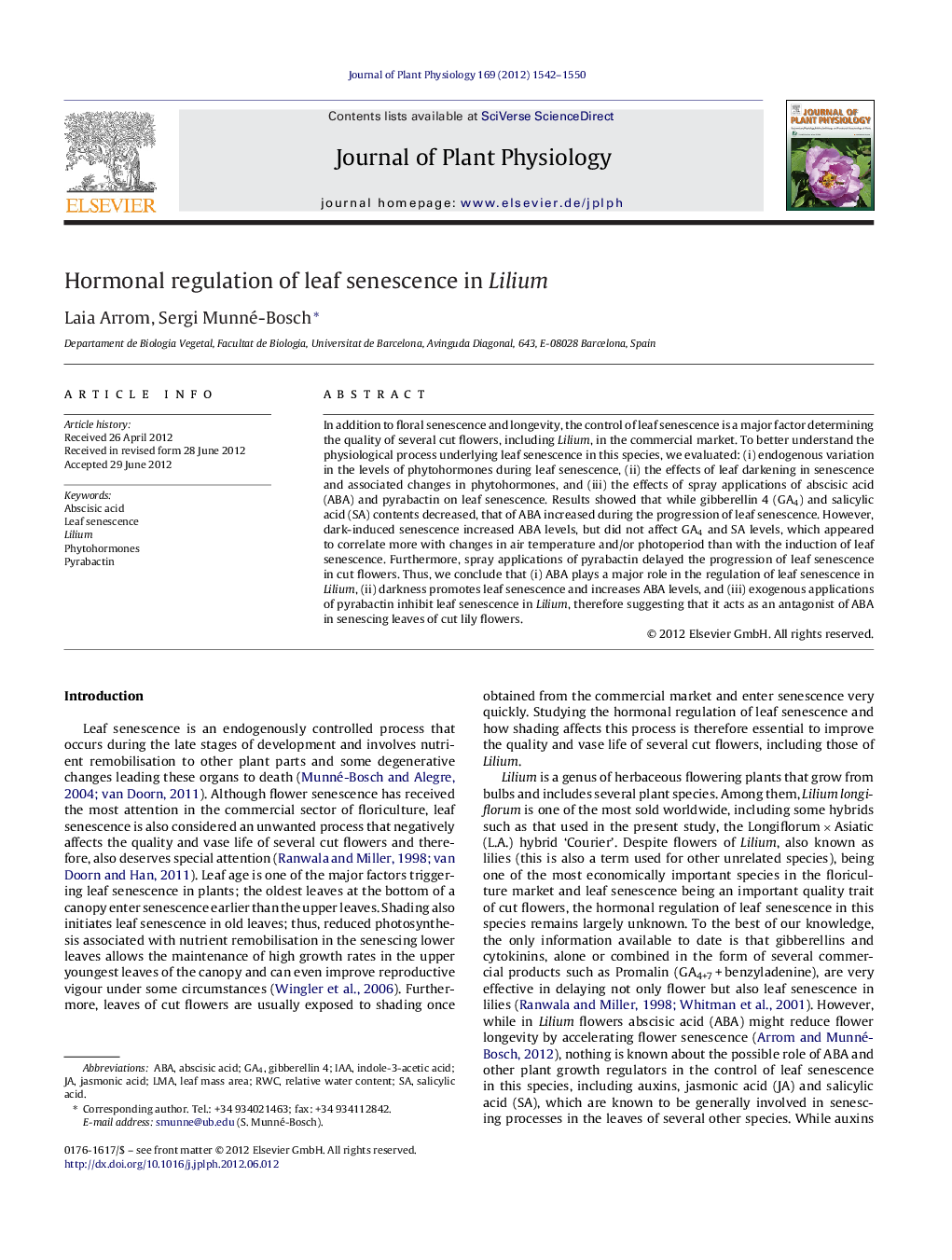| Article ID | Journal | Published Year | Pages | File Type |
|---|---|---|---|---|
| 2056362 | Journal of Plant Physiology | 2012 | 9 Pages |
In addition to floral senescence and longevity, the control of leaf senescence is a major factor determining the quality of several cut flowers, including Lilium, in the commercial market. To better understand the physiological process underlying leaf senescence in this species, we evaluated: (i) endogenous variation in the levels of phytohormones during leaf senescence, (ii) the effects of leaf darkening in senescence and associated changes in phytohormones, and (iii) the effects of spray applications of abscisic acid (ABA) and pyrabactin on leaf senescence. Results showed that while gibberellin 4 (GA4) and salicylic acid (SA) contents decreased, that of ABA increased during the progression of leaf senescence. However, dark-induced senescence increased ABA levels, but did not affect GA4 and SA levels, which appeared to correlate more with changes in air temperature and/or photoperiod than with the induction of leaf senescence. Furthermore, spray applications of pyrabactin delayed the progression of leaf senescence in cut flowers. Thus, we conclude that (i) ABA plays a major role in the regulation of leaf senescence in Lilium, (ii) darkness promotes leaf senescence and increases ABA levels, and (iii) exogenous applications of pyrabactin inhibit leaf senescence in Lilium, therefore suggesting that it acts as an antagonist of ABA in senescing leaves of cut lily flowers.
